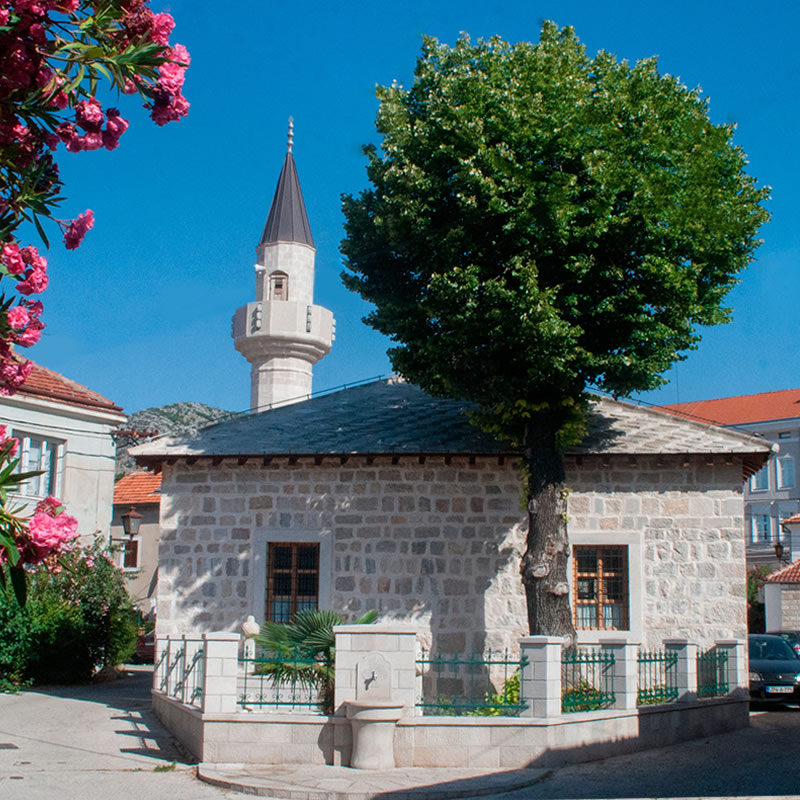

Religious tourism is one of the most developed forms of tourism in Trebinje. On the territory of the city there is a large number of religious buildings from different eras. In this area, as well as throughout BiH, there are objects of the Orthodox, Catholic and Islamic religions.
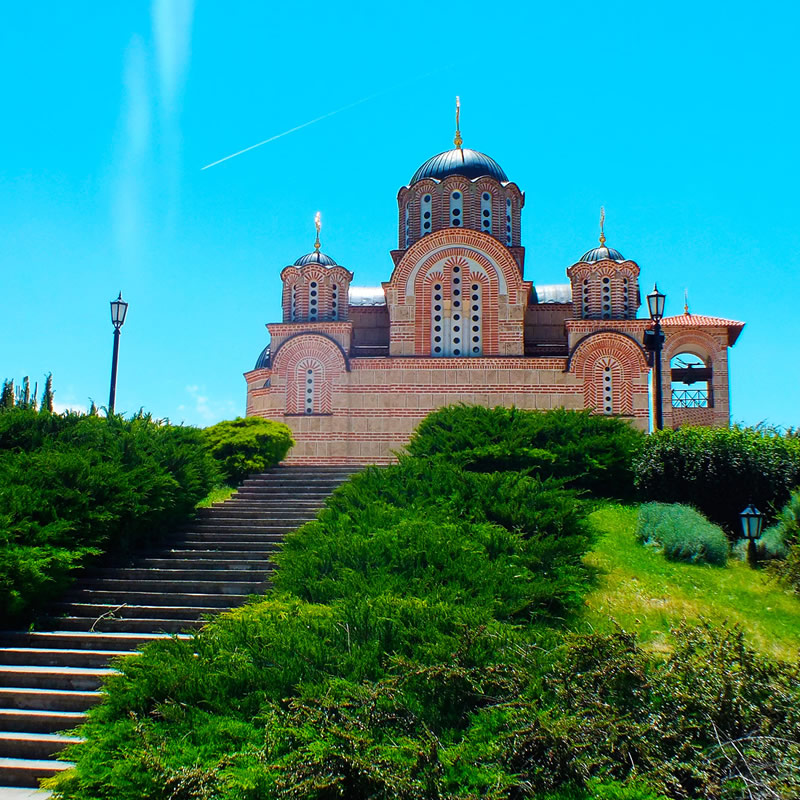
A particularly magnificent building from the year 2000 – it is dedicated to the Blessed Virgin Mary. According to the wish of the poet Jovan Dučić, born in Trebinje, expressed in his will, the temple of the Blessed Virgin Mary was built on the Crkvina hill above Trebinje, where Dučić was buried. In addition to the temple, which is a faithful copy of the Gračanica monastery in Kosovo and Metohija – that’s why many call it Hercegovina Gračanica – the complex also includes a bell tower, an icon gallery, a parish hall, an amphitheater, a fountain, a church bookstore, a museum and a summer garden. The temple can be seen from every point in Trebinje and it is the most beautiful sacred building in all of Herzegovina. The poet’s wish was to be buried in Trebinje, so his remains were transferred from America to Hercegovina Gracanica in October 2000.
Duži Monastery is dedicated to the Intercession of the Blessed Virgin Mary. It is located on the left bank of Trebišnjica, 10 kilometers downstream from Trebinje. In the 16th and 17th centuries, it was the metoh of the Tvrdoš monastery. When Tvrdoš was destroyed, the metropolitan and the monks moved to Duža in 1695, rebuilt and expanded the church and metoh, which has since then been named by which it is still known today. Until the abolition of the Patriarchate of Peć in 1776, it was the center of the Metropolitanate of Herzegovina. The monastery suffered many times – it was looted and ravaged. The monastery owns valuable manuscript church books, even Russian editions from Moscow and Kiev. In the Duži monastery there is also a fragment of the Holy Cross.
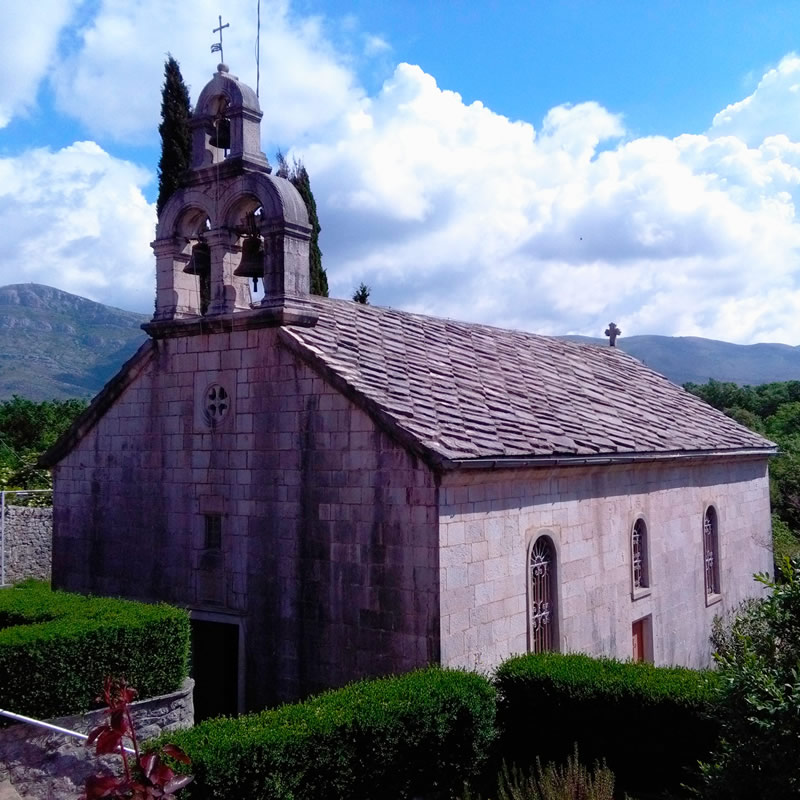
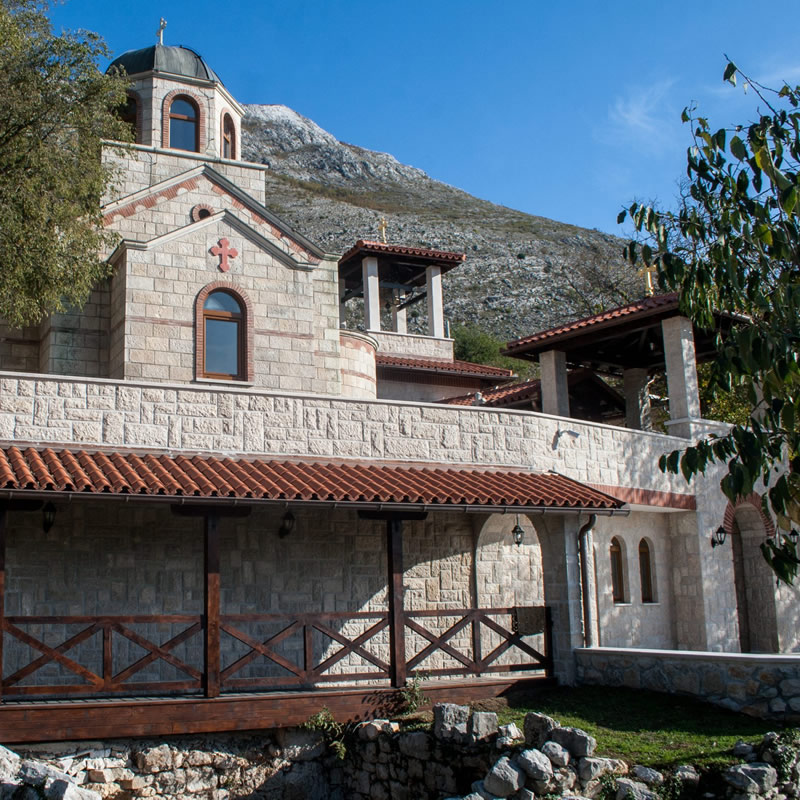
The village of Mrkonjići is located on the eastern side of Popovo polje on the road Trebinje – Ljubinje. In this village, on December 28, 1610, holy father Vasilije Ostroški was born, baptized Stojan, to mother Anastasia and father Petar Jovanović. On the holiday of St. Basil of Tvrdoš and Ostrog the Miracle Worker, on May 12, 1998, in the village of Mrkonjići in Popovo polje, a temple dedicated to St. Basil was consecrated. The temple was built on the foundations of the birthplace of the great God-pleaser and is located on the right side of the road when coming from the direction of Trebinje. On the left side of the road is the temple of St. Nicholas, where the saint was baptized. Next to the temple is the cemetery where St. Ana, the mother of St. Basil, rests.
Tvrdoš Monastery, 4.5 km away from Trebinje on the way to Mostar, was built on the foundations of an old church. It has existed continuously since late antiquity (IV-VI century), with the fact that it has been demolished and rebuilt on several occasions. He suffered the most in 1694 in the battles between the Venetians and the Turks. On that occasion, all the inventory of the monastery was transferred to the Savina monastery near Herceg Novi, where it is kept today. In the first half of the 16th century, the Tvrdoš monastery was the largest scriptorium in the south of Slovenia, and at the same time it was the cultural and spiritual center of the wider area.
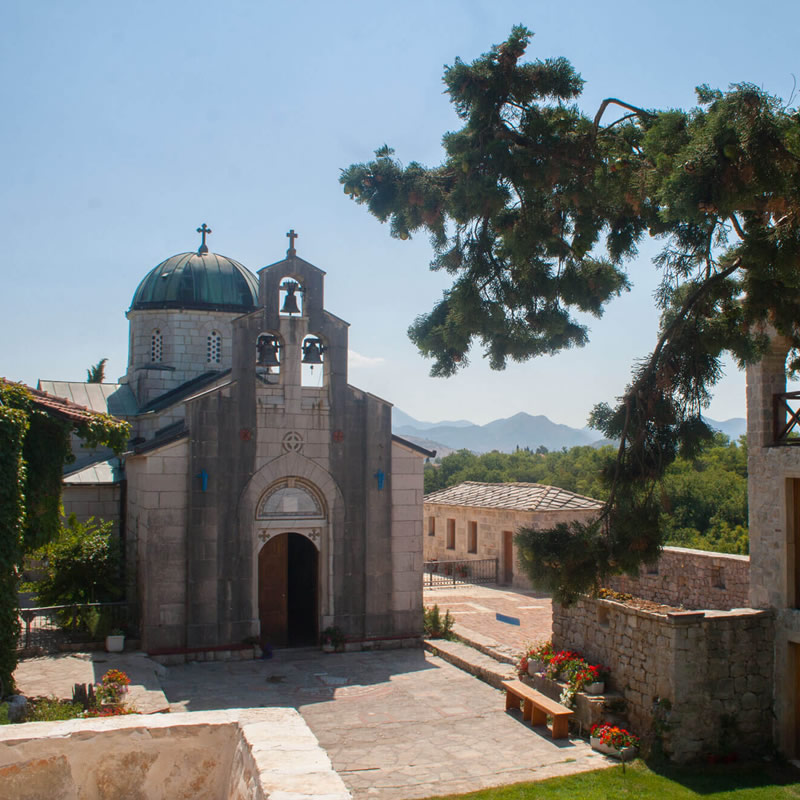
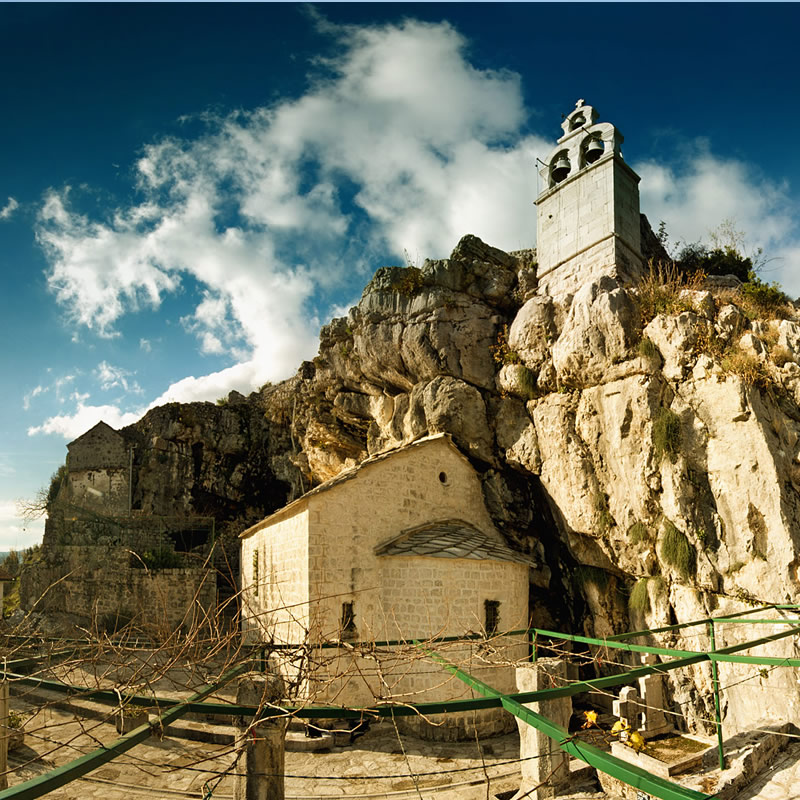
Zavala Monastery is about 40 kilometers southwest of Trebinje. According to folklore, the monastery is an endowment of King Dragutin. When talking about the time of its foundation, the year 1271 is often mentioned, which is inscribed on an old monastery seal. The famous painter Georgije Mitrofanović stayed here at the beginning of the 17th century. Before coming to Zavala, he painted the Hilandar monastery on Sveta Gora. In Herzegovina, apart from this monastery, he also painted the Dobrićevo monastery near Bileća.
The Petro-Pavlov Monastery is located in Petrovo Polje, 5 kilometers southeast of Trebinje. On the foundations of the church, which is said to originate from the time of Justinian (6th century), a new one was built at the beginning of the 20th century. Archaeological findings testify to very old buildings, probably from the era of early Christianity, which were located on the site of the current monastery. The monastery complex consists of the temple of Apostle Peter, built in 1906 on the remains of an older temple, the remains of the temple of Apostle Paul, and a dormitory.
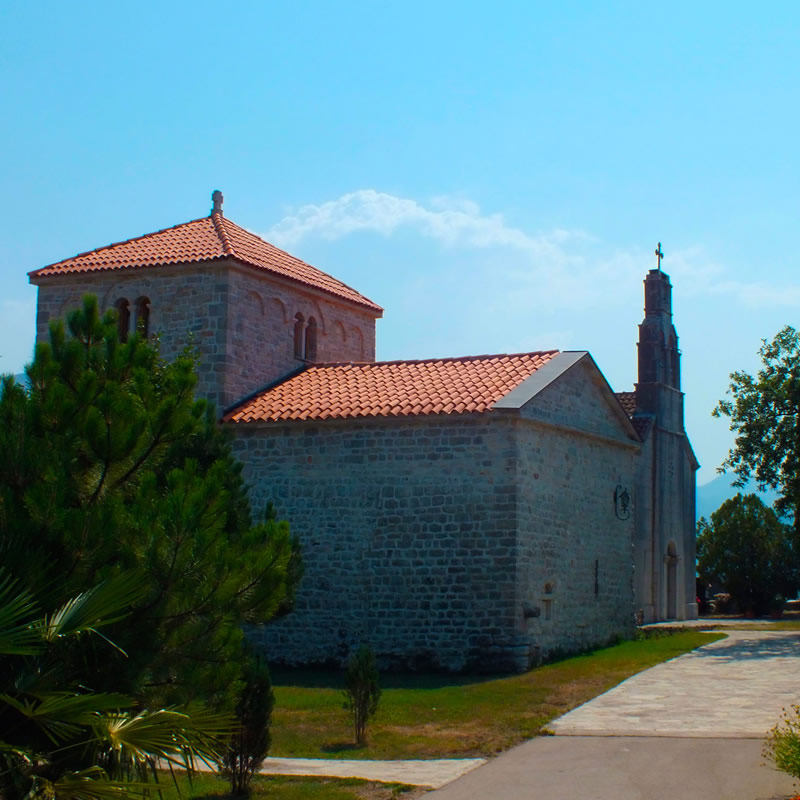
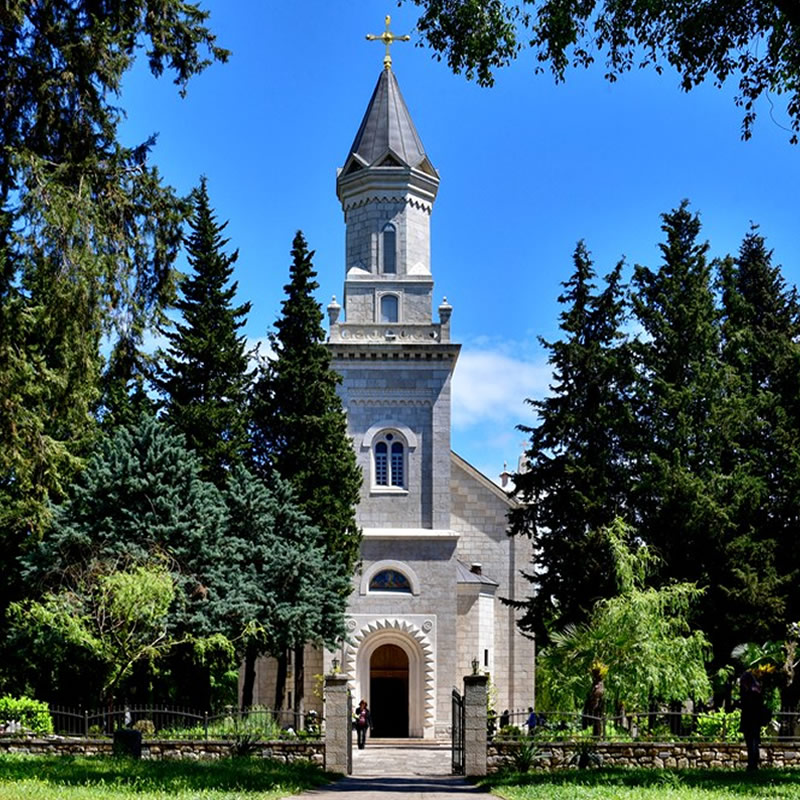
The Saborna Church of the Transfiguration of the Lord was built from 1888 to 1908. It is located in the city center. Iconostasis in the church of St. The transformation was done by the famous Montenegrin artist Marko Gregović, assisted by Atanasije Popović. A diocesan home with a library was built next to the church. The choir of St. Vasilij Ostroški and the folklore society work as part of the temple.
In 1984, the thousandth anniversary of the existence of the Diocese of Trebinje-Mrka was celebrated, the first mention of which can be found in the bull of Benedict VIII (1012–1024), issued on September 27, 1022. During its long existence, the diocese went through various difficulties, the causes of which were political and social factors. In 1984, on May 31, the small church in honor of the birth of the Blessed Virgin Mary in Trebinje was declared a cathedral.
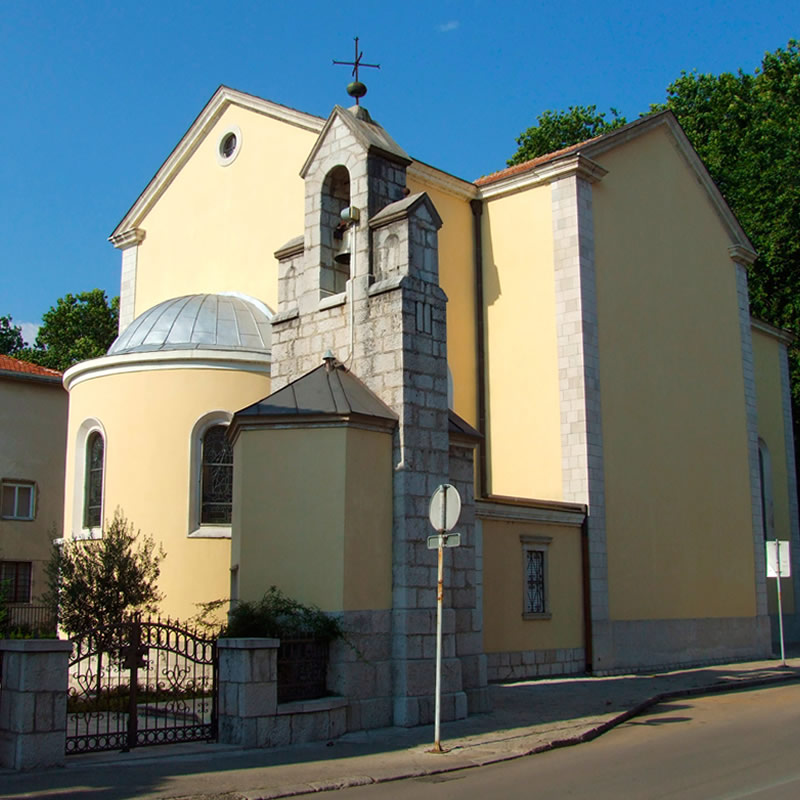
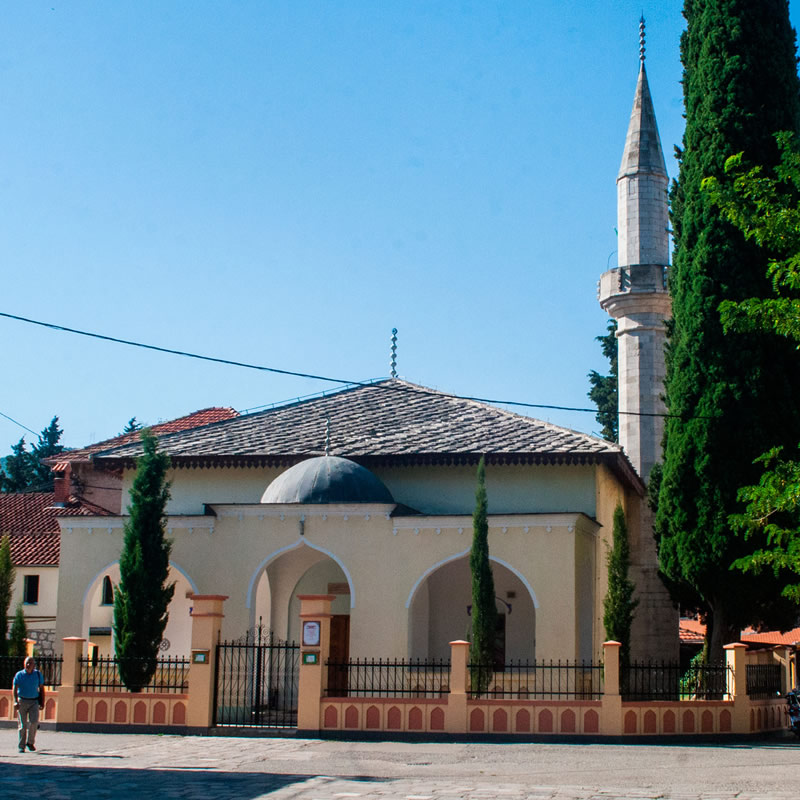
It IS located in the Old Town (Kastel), not far from the main gate. It was built of hewn stone and covered with a four-pitched roof in imitation of a dome under eternite. An octagonal stone minaret, 16 meters high, was built next to the right wall. It was built in 1726. and the endowment of Osman Pasha Resulbegović. The builders were masters from Dubrovnik. Its construction has elements of Mediterranean architecture. It is famous as the most spacious mosque in Herzegovina. Before the war, it was a cultural monument under state protection. As accompanying buildings, Osman Pasha built a mekdeb and a madrasah near the mosque, which were the first educational institutions in Trebinje. During the last war, the mosque was demolished. The foundation stone for the renovation was laid on May 5, 2001. The mosque was officially opened on July 15, 2005. Today’s mosque is authentic to the one that was demolished in terms of dimensions and materials used in its construction.
This mosque is located in the Old Town “Kastel”, not far from the right bank of the Trebišnjica River. It was built of hewn stone and covered with a hipped roof under a slab. Adjacent to the right wall is an octagonal stone minaret about 12 meters high. It is square in shape and without any architectural values. It was built by Osman Pasha Resulbegović in the name of Sultan Ahmed III in 1719. It was built by Dubrovnik masters. There are elements of Mediterranean architecture in its construction. During the last war, the mosque was demolished. The foundation stone for the restoration was laid in 2011, and it was officially opened in August 2014. During the renovation, the threshold of the original mosque was found, which today is preserved in glass inside it. Next to the mosque is a cemetery with three niches.
